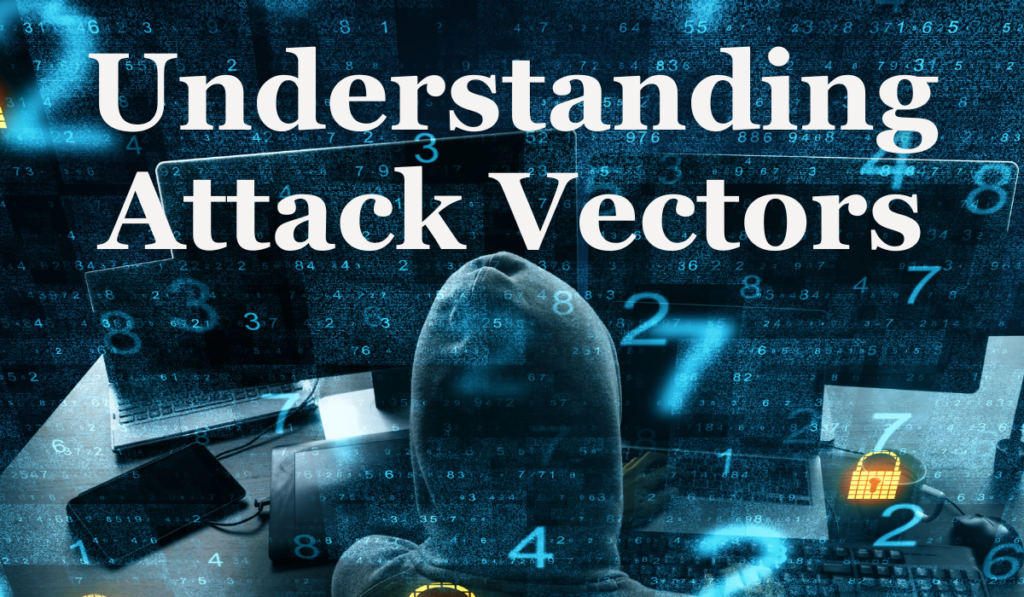
An attack vector refers to a route or technique employed by a hacker to unlawfully infiltrate a network or computer. This is done to exploit vulnerabilities in the system. The two common types of attack vectors are active and passive attacks.
Active Attack Vectors
Active attack vectors involve direct and intentional efforts by cybercriminals to compromise systems, networks, or individuals. These attacks are typically more aggressive and intrusive, aiming to exploit vulnerabilities, disrupt resources, or affect operations. Let’s look at some examples of active attack vectors:
- Malware Attacks: Malicious software such as viruses, trojans, and ransomware are designed to infiltrate systems and cause harm. Users often unknowingly download or execute malware, making it crucial to have robust antivirus software and regularly update systems.
- Phishing Attacks: Phishing involves tricking individuals into divulging sensitive information by posing as a trustworthy entity. Be cautious of unsolicited emails, messages, or links. And always verify the legitimacy of communication before sharing personal or financial details.
- Denial-of-Service (DoS) Attacks: These attacks aim to overwhelm a system or network, rendering it unavailable to users. Implementing firewalls, and intrusion detection systems, as well as maintaining system updates can help mitigate the impact of DoS attacks.
- Password Attacks: Cybercriminals may attempt to crack passwords using techniques like brute force attacks or credential stuffing. Strengthen your passwords and enable multi-factor authentication for an extra layer of security.
Passive Attack Vectors
On the other hand, passive attack vectors involve more subtle methods where cybercriminals collect information without directly engaging with the target. These attacks often focus on eavesdropping and reconnaissance. Examples of passive attack vectors include:
- Packet Sniffing: Attackers intercept and analyze network traffic to gain unauthorized access to sensitive data. Encrypting communication channels and using secure protocols (e.g., HTTPS) helps protect against packet sniffing.
- Social Engineering: This technique relies on manipulating individuals into divulging confidential information. Stay vigilant and education on common social engineering tactics is critical to avoid falling prey to such attacks.
- Eavesdropping: Unauthorized individuals may listen in on communication channels to gather information. Use secure communication channels and consider encryption technologies to safeguard sensitive conversations.
Protecting Against Cyber Threats
To avoid falling victim to cybercrime through both active and passive attack vectors, ensure that you are protecting your clients’ businesses with the following suggestions:
- Regularly Update Systems: Keep operating systems, software, and antivirus programs up to date to patch vulnerabilities and protect against known threats.
- Educate Users: Train individuals on recognizing phishing attempts, social engineering tactics, and the importance of strong password practices.
- Implement Network Security Measures: Utilize firewalls, intrusion detection/prevention systems, and virtual private networks (VPNs) to secure networks and data.
- Encrypt Sensitive Information: Employ encryption for data in transit and at rest to protect against eavesdropping and unauthorized access.
- Backup Data: Regularly backup important data and ensure that backup systems are secure. This helps mitigate the impact of ransomware attacks.
- Monitor Network Activity: Implement monitoring tools to detect unusual or suspicious network activity, enabling quick responses to potential threats.
By understanding the nuances of active and passive attack vectors and adopting proactive cybersecurity measures, individuals and organizations can significantly reduce the risk of falling victim to cybercrime. Stay informed, stay vigilant, and stay secure.
The post Understanding Active and Passive Attack Vectors appeared first on Breach Secure Now!.




